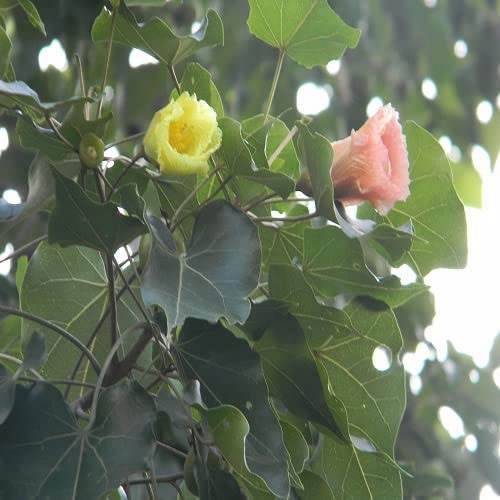Parash Pipal Plants
The Parash Pipal, also known as the Ficus religiosa or sacred fig tree, is a species of fig native to the Indian subcontinent and Southeast Asia. It holds significant religious and cultural importance in Hinduism, Buddhism, and Jainism. The tree is often planted near temples and is considered sacred.
Key Characteristics of Parash Pipal:
-
Appearance: It is a large deciduous tree that can grow up to 30 meters (about 98 feet) tall. The leaves are heart-shaped with an extended drip tip.
-
Religious Significance:
- Hinduism: The tree is associated with Lord Vishnu and Lord Shiva and is worshipped in various rituals. It's also believed to be the embodiment of Lord Vishnu.
- Buddhism: The Buddha is said to have attained enlightenment under a Bodhi tree, which is a type of Ficus religiosa.
- Jainism: It is also revered in Jainism, particularly among the followers of Tirthankara Parshvanatha.
-
Growth and Cultivation:
- Soil: Prefers well-drained loamy soil but can grow in a variety of soil types.
- Climate: Thrives in tropical and subtropical climates and can withstand high temperatures and humidity.
- Watering: Requires regular watering, especially in the early stages of growth, but once established, it is quite drought-tolerant.
- Propagation: Can be propagated by seeds or cuttings, with seeds being the most common method.
-
Ecological Benefits:
- Air Purification: It is known for its ability to purify the air and is often planted for this reason.
- Wildlife Habitat: The tree provides a habitat for various birds and animals. The figs are a food source for many bird species.
-
Medicinal Uses: Different parts of the tree, such as the leaves, bark, and roots, are used in traditional medicine to treat various ailments like asthma, diabetes, diarrhea, and wounds due to their anti-inflammatory, antidiabetic, and antioxidant properties.
Would you like to know more about its cultivation or any other specific aspect?


